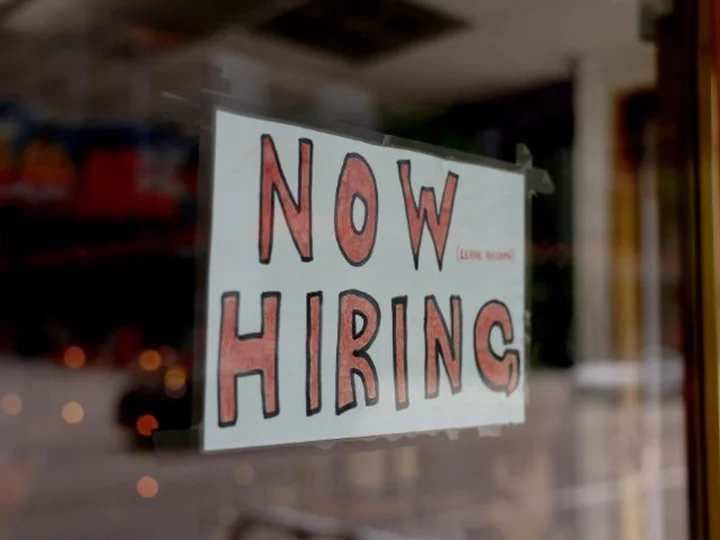US inflation has slowed markedly over the past year as the Federal Reserve raised interest rates aggressively to cool demand and slow price increases. The job market hasn't cooled as much and there's always speculation over what the latest monthly jobs report means for the Fed.
The central bank will continue to pay close attention to the state of the labor market, specifically on wages, as it focuses on defeating inflation, but there's only so much that labor data can reveal about price increases.
Mainly, it's that wage figures are great at gauging inflation's progress, but they're lousy at forecasting its future.
Wages are "not a leading indicator of price inflation," Chicago Fed President Austan Goolsbee said in an interview with Bloomberg after the July jobs report showed that wage growth picked up. That same day, Atlanta Fed President Raphael Bostic said that "during this whole high inflation period, worker wages have trailed inflation for quite some time and so we're still in that catch-up period and I expect that we will still see strong wages."
Earlier this month, the August jobs report showed that wage growth eased and that the unemployment rate rose to 3.8%. Financial markets have shifted back to a "bad news is good news" way of perceiving economic data and will continue to react to labor data, but ultimately, it's the actual inflation data that matter most to the Fed.
"The (August jobs) report was decidedly positive for markets, however when all is said and done it will be the trajectory of inflation that will ultimately form the Fed's rate decision -- inflation remains sticky," wrote Quincy Krosby, chief global strategist for LPL Financial, in an analyst note.
Fed officials have made it clear that the tight labor market has been playing some role in keeping inflation elevated, as they mull another rate hike later this year and there's a clear connection between labor costs and inflation because labor is the single biggest cost for many businesses, especially ones that provide services.
If a firm's labor costs are high because it has to offer higher wages to attract or retain talent, those costs could be passed onto consumers if productivity isn't keeping up with those labor costs.
The issue of labor figures in forecasting inflation lies with productivity data.
"Historically wage growth that is not accompanied by productivity growth has been correlated with inflation, but the problem there is that productivity data are quarterly, so they're not as real time as monthly payrolls, and those numbers are subject to large revisions, especially lately," Agron Nicaj, US economist at MUFG, told CNN in an interview.
"So labor market data and wage growth can be useful at explaining inflation, but it's less useful at predicting it."
That means it's possible to have strong wage growth without it pushing up consumer prices — if it's tied with equally strong productivity growth.
Goolsbee's solution? "If you want to know if you're beating inflation, go watch the inflation," he told Bloomberg last month.
The US dollar is king again. Here's why
The US dollar is enjoying its longest winning streak in nearly nine years.
The greenback was heading for its eighth-straight week of gains against a basket of other major currencies on Friday, its best run since winter 2014-2015. It has gained 5% since mid-July, my colleague Anna Cooban reports.
The rally comes after months of volatility, fueled by concerns that the dollar may be losing its status as the world's reserve currency. Speculation about the potential de-dollarization of global trade rose again last month after the Chinese-led expansion of the BRICS group of nations to include major oil producers, such as Saudi Arabia.
"Rumors of the US dollar's demise continue to be greatly exaggerated," James Athey, investment director at Abrdn, a UK-based global investment company, told CNN.
The US Dollar Index, which now stands at its highest level in six months, has been buoyed by a slew of positive economic data in recent weeks — fueling expectations that the Federal Reserve will keep interest rates higher for longer. Higher interest rates tend to boost the value of a country's currency by attracting more foreign capital, as investors anticipate making bigger returns.
Up Next
Monday: Earnings from Oracle.
Tuesday: The National Federation of Independent Business releases its Small Business Optimism Index for August.
Wednesday: The UK's Office for National Statistics releases July figures on gross domestic product. The US Labor Department releases its Consumer Price Index for August.
Thursday: Earnings from Adobe. The European Central Bank announces its latest monetary policy decision. The US Labor Department releases its Producer Price Index for August, along with the number of new application for jobless benefits for the week ended September 9. The US Commerce Department releases August figures on retail sales. China's National Bureau of Statistics releases August figures on industrial production, fixed asset investment, the country's unemployment rate and retail sales.
Friday: Earnings from Lennar Homes. The Federal Reserve releases August data on industrial production. The US Labor Department reports export and import prices in August. The University of Michigan releases a preliminary reading of consumer sentiment for September.









